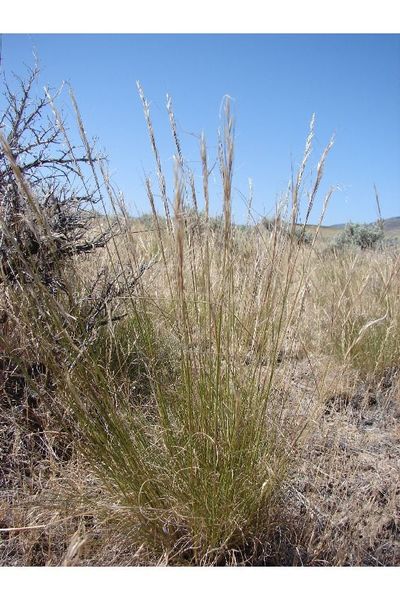Thurber’s Needlegrass Information
Whatever you need grass to do, the odds are good that Thurber’s needlegrass plants will do it for you. Drought tolerant and cold hardy, the grass serves as forage for cattle, horses, and other livestock as well as elk, deer, and antelope. Before you consider growing Thurber’s needlegrass, you might want to know what the plants look like. Thurber’s needlegrass plants are native, cool-season bunchgrass perennials with narrow rolled leaves up to 10 inches (25.5 cm.) tall. According to Thurber’s needlegrass information, the flower plume is a shade of purple and about 4 inches (10 cm.) long. The seed gives the plant its common name, since it is short but sharp, with a long awn.
Thurber’s Needlegrass Uses
There are as many different reasons for growing Thurber’s needlegrass as there are Thurber’s needlegrass uses. Grazing for livestock is perhaps the most important of them. Any list of Thurber’s needlegrass uses begin with grazing. The broad grass starts new growth early in spring, goes dormant in summer, and then starts growing again in autumn given sufficient rainfall. During spring, Thurber’s needlegrass plants are preferred forage for cows and horses. After seed drop, the grass is acceptable forage for all livestock. If you want to keep wildlife happy, growing Thurber’s needlegrass is a great idea. In spring, it is preferred forage for elk. It is also desirable forage for deer and antelope. Erosion control is the last but not least of Thurber’s needlegrass uses. Thurber’s needlegrass information suggests that the grass is effective protection for the soil against wind and water erosion.
How to Grow Thurber’s Needlegrass
If you are wondering how to grow Thurber’s needlegrass, you’ll want to plant it on well-drained soils. Any kind of loam works well, whether fine and sandy, coarse and gravelly, or silty. When you start growing Thurber’s needlegrass, plant it in the sun. Be sure to give it protection from saline. Once established, the plant pretty much cares for itself.
